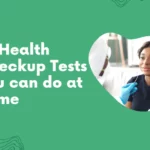The silence after the final whistle was deafening. Millions of hearts in Nigeria sank as the dream of AFCON glory slipped away. But for John, the disappointment was cut short by a different kind of pain, a crushing pressure in his chest that radiated down his arm. Minutes later, surrounded by the cheers of his heartbroken compatriots, John was gone, claimed by a silent killer – high blood pressure.
John’s story, while tragic, is not uncommon in Nigeria, the most populous country in Africa. Here, the burden of hypertension is staggering. Statistics reveal that nearly one-third of the adult population suffers from this silent condition, contributing significantly to the alarming rise of cardiovascular disease across the continent. This translates to millions of individuals facing an increased risk of heart attacks, strokes, kidney failure, and other life-threatening complications.
The impact of this burden goes far beyond individual lives. It strains healthcare systems, reduces productivity, and stifles economic growth. The potential human and economic cost is simply too high to ignore.
But there’s a glimmer of hope. Unlike many chronic diseases, high blood pressure is not a death sentence. You can live to a full ripe age even with hypertension. However, early detection and intervention are key. By understanding our blood pressure readings and taking proactive steps, we can significantly reduce the risk of developing this silent killer and its devastating consequences.
Understanding High Blood Pressure Readings: The First Step to Control

Our blood pressure is measured in millimetres of mercury (mmHg) with two numbers: systolic and diastolic. The systolic pressure represents the force exerted by our heart as it pumps blood, while the diastolic pressure indicates the pressure when the heart is at rest.
According to the latest guidelines from the American College of Cardiology and the American Heart Association, healthy blood pressure falls below 120/80 mmHg. However, even small elevations require attention:
- Elevated: 120-129/<80 mmHg – Signals a higher risk and necessitates lifestyle changes. Blood pressure readings must be reassessed within 3 to 6 months.
- Stage 1 Hypertension: 130-139/80-89 mmHg – Requires lifestyle modifications and use of medication depending on individual risk factors. Following management, BP reassessment will take place in 1 month. If at goal, reassessment will occur every 3-6 months. If not at goal, the patient will be reassessed for adherence and possible intensification of therapy.
- Stage 2 Hypertension: 140-159/90-99 mmHg or higher – Requires lifestyle changes and a combination of medications to manage blood pressure effectively. Reassessment occurs as with Stage 1 hypertension
Taking Charge of Your Health

Early detection of high blood pressure opens the door to effective management. Here’s how you can take charge:
- Get regular blood pressure checks: Aim for at least once a year, or more frequently if you have risk factors like age, family history, or unhealthy habits.
- Home monitoring: Consider monitoring your blood pressure at home to track trends and identify potential concerns.
- Embrace healthy lifestyle changes: These are crucial for preventing and managing hypertension. Focus on maintaining a healthy weight, eating a balanced diet, engaging in regular physical activity, managing stress, and limiting alcohol and tobacco intake.
- Work with your doctor: Develop a personalized treatment plan that may include lifestyle modifications and medication, depending on your individual needs.
Manage Your Blood Pressure With the Flourish Care Plan
The key to maintaining your blood pressure readings within optimal levels is professional guidance and personalized plans. Don’t wait until the final whistle blows on your health. Purchase a Flourish Care plan today, stay informed about your blood pressure status and work with a qualified medical professional who will empower you to live a healthier life.





This is very insightful and the emphasis on early detection could save alot of people. Many thanks for providing this details .